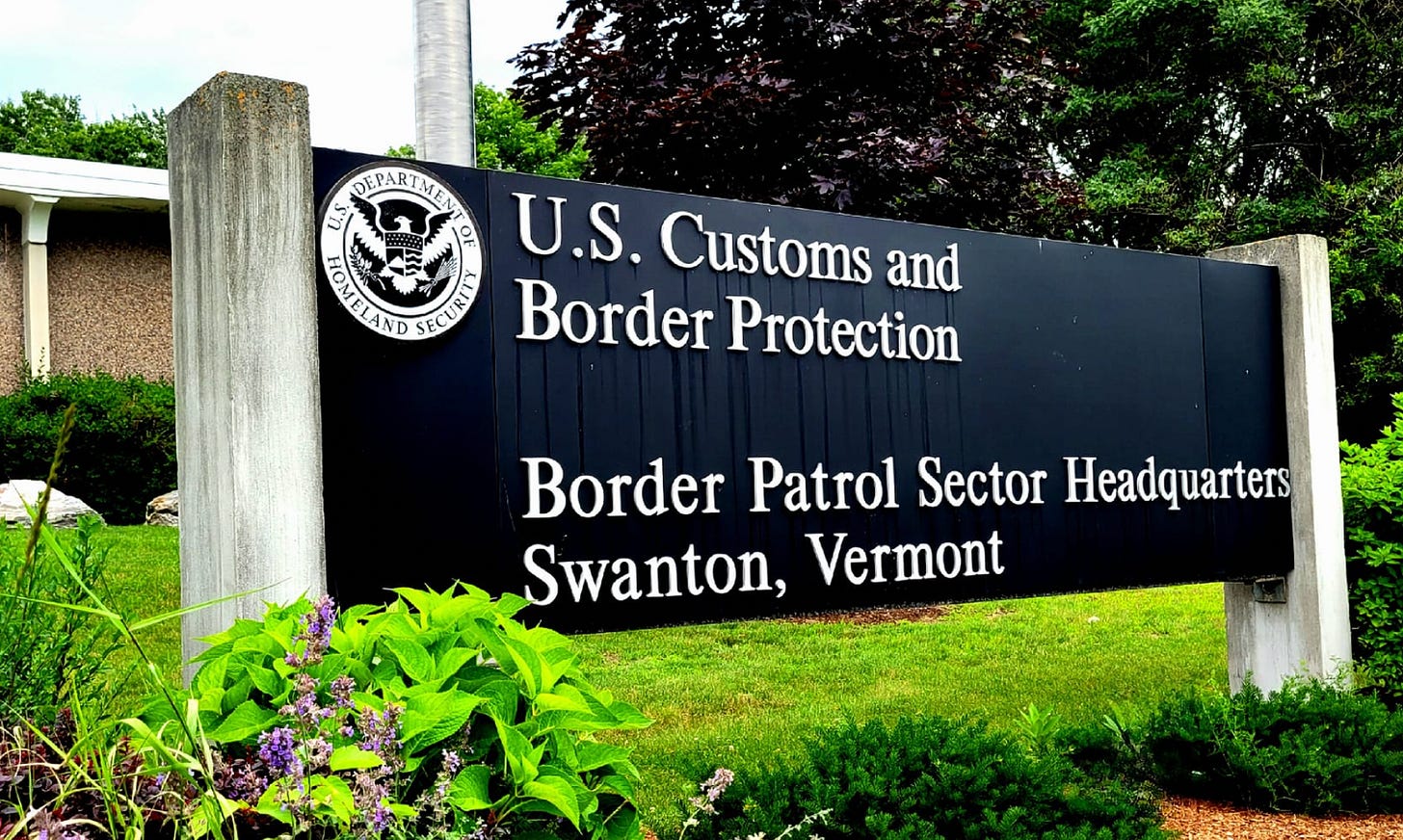Vermont Had Third Highest Illegal Crossings of 14 Northern Border States
Border patrol reports 59,000 illegal crossings by people from 66 different countries in Vermont alone during last presidential term.
Recent Customs and Border Patrol data confirm that New York, Washington and Vermont saw the highest illegal crossings on the U.S.–Canada border during the Biden years. Nearly half of all northern-border encounters occurred in New York (about 342,488), followed by Washington (≈120,720) and Vermont (≈59,300).
In aggregate, roughly 700,000 illegal crossing encounters were reported in the 14 northern-border states from FY2022 through FY2024 (plus part of FY2025)
Security and Smuggling Trends in Vermont
Vermont’s rural northern border has become a busy smuggling corridor. Border Patrol reports that in FY2023 it encountered migrants from 66 different countries in the Swanton Sector – nearly half of them Mexican nationals. “Multiple organizations” have been identified using Canada as a staging area to smuggle people into the U.S. through Vermont and neighboring states.
The typical profile has shifted in 2023–2024: after Canada reinstated visa requirements for Mexicans, Canadian officials saw fewer Mexican migrants and instead have noted more travelers from India, Bangladesh and other countries – and U.S. agents in Vermont likewise report a rising proportion of South Asian and East Asian nationals among northern-border crossers.
Range of nationals: In FY2023 Swanton Sector agents caught people from 66 countries (countries as diverse as India, Venezuela, Morocco and El Salvador), with about 49% of arrests still Mexican nationals. A WBZ-TV tour even captured a Lithuanian man attempting to cross through woods by a pond straddling the VT–Quebec line.
Smuggling networks: Border Patrol officials note that transnational criminal organizations (TCOs) are facilitating these crossings. “We have multiple identified organizations utilizing Canada to smuggle individuals into the U.S.,” said the Beecher Falls Station chief.
Diverse entry points: Many crossings occur in remote fields, forests and abandoned roads rather than at official ports of entry. Illegal entries have included entire family groups (including infants), and agents frequently perform search-and-rescue in Vermont’s harsh terrain. For example, in late 2022 BP agents led life-saving rescues in separate incidents in Newport, VT and Burke, NY.
Extensive patrol zone: Agents in Vermont are authorized to stop vehicles up to 100 miles from the border. Local advocates warn that the increased Border Patrol presence – highlighted by surging cross-border traffic – has also led to more interior immigration stops, detentions and deportations of noncitizens living in the state.
Staffing and Infrastructure
To handle the surge, the Swanton Sector has bolstered manpower. In early 2023 CBP deployed an extra 25 border patrol agents to the Northeast (including Vermont) in response to rapidly rising crossings. By late 2024, Swanton Sector was receiving temporary task forces of 20–25 agents from other regions (including from the southern border) to augment its ranks. CBP has also cited deploying additional tactical teams and canine units in Vermont.
Nonetheless, Vermont’s 90+ miles of unfenced, largely undeveloped border remain a challenge for authorities. (Proposals to add surveillance towers or barriers in Vermont have been discussed in Congress, but as of 2025 no new physical fencing has been built.)
Terror Watchlist Encounters
Known or suspected terrorists are rare but do appear at the northern border. CBP’s Terrorist Screening Dataset (TSDS) statistics show hundreds of watchlist “encounters” in recent years – in FY2024 CBP reported 358 encounters with watchlisted individuals at northern-land POEs.
This far exceeds the FY2024 southern-border total (155 suspects). Nearly all were at official crossings (ports of entry), and only a handful were arrested in Vermont specifically.
In public reports, Vermont crossings have not been singled out as a hotspot for terror suspects; the known cases cited involve wide-ranging routes through Canada.
Federal and Legislative Responses
In response to the uptick, federal officials and lawmakers have taken notice. In March 2023, the House Homeland Security Committee held a field hearing on “Death, Drugs and Disorder on the Northern Border.” Lawmakers in Vermont’s region and at the federal level have repeatedly urged increased resources for the northern border.
President Biden’s June 2024 asylum directive largely targeted the southern border and did not halt northern crossings, but all sides acknowledge the northern flow as a distinct challenge.
DHS and Vermont officials say they will continue to monitor the northern border closely – balancing the need to interdict illicit crossers with the realities of Vermont’s remote terrain and local communities.


